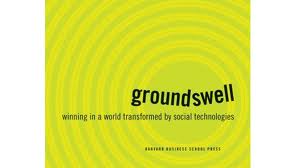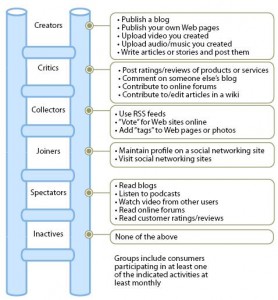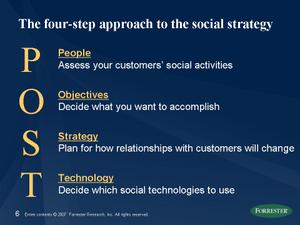What else can be a better fit than talking about Groundswell when blogging about e-Marketing and social media? It also “just happen” to be the first assignment I chose for my course: ) – a book review of Groundswell by Charlene Li and Josh Bernoff.
Before going into details of the book, just a word on the overall impression of the book after 2 chapters…
After the first 2 chapters of the book, I was still a bit sceptical about this book. Is this book just trying to explain an unstoppable phenomenon to managers who do not keep up with the current technology trends? According to the book, Groundswell is “A social trend in which people use technology to get the things they need from each other, rather than from traditional institutions like corporations”. It describes how people make use of various technology trends such as blogs, social media, feeds, wikis, and open source to communicate and collaborate. Groundswell is the new “Word of Mouth”. Products and services are no longer being reviewed by the typical editorial review but by everyone who is willing to participate and collaborate. For me, I was already part of Groundswell without even knowing what it is. So it gave me a false impression of it being a book of buzz word without concrete content.
Fortunately as I read on, the content become more specific and I start to understand why this book becomes popular.
Chapter 3 provide a useful profiling method for the people involved in the Groundswell. It uses a ladder called “The social Technographics ladder” to describe people’s level of involvement in the Groundswell. This new “Technographics” may give marketeers a new perspective in segmenting their position than the traditional demographics or physcographics. This is a useful first step when marketeer get into the ‘P” stage of tapping into the Groundswell (more on this later)…
Part two of book (from Chapter 4 to 9) is really the sole and essence of the book. It provides specific approach, strategies and case studies for marketeers to tap into the Groundswell.
The POST method is provided as a starting framework to assemble a work plan. (POST = People, Objectives, Strategy, Technology) Many companies knows that they need to get into the groundswell but don’t know exactly where to start, so POST is a good reference point.
To help reader digest the POST framework, various useful cases are provided so that the framework can be more easily absorbed. The cases provide illustration on how companies can listen to, talk with, energize, support, and embracing the groundswell. It is useful to note that the POST framework should be used in order. One pitfall we may fall into is that we get too hyped up about a new technology trend and jump right into it without first trying understanding how it affects people (customer/employees) and how important it is to first define the objective and strategy.
Part 3, the last part of the book is about the future of groundswell and how this trend may reshape e-Marketing. It ought to provide some insight into the future but it really just reinforce the idea presented in part 2 of the book. In some sense, this is the weaker part of the book. I think a way to enrich this part is to cover how companies can be more fully integrated in the groundswell once they have gone through POST; how to empower their employees so that they get involved into the groundswell from the bottom up. Many cases in this book are about top level management tapping into groundswell and interacting with customers. A natural next step may be promoting grassroots level employees’ involvement also. Another important aspect that may use more coverage is how to do brand monitoring in the groundswell without outsourcing to third party. This was briefly covered under “Listening to the Groundswell”. With groundswell covering such a wide technology spectrum, I can see that monitoring is a daunting task. But some smaller organization that are just starting in this space may not (or may not want to) afford third party consultant.
All in all, Groundswell is a good introductory book that for sure is an eye opener on the subject. It serves a wide range of readers as it provides the buzzword, the business school framework, and yet some concrete cases that are indeed quite helpful.


